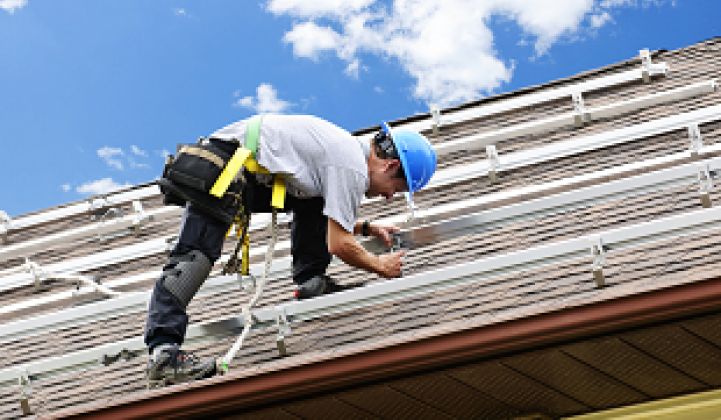Over the past two years, we’ve seen a phenomenal growth in residential solar in the U.S., and, at the same time, a huge surge in nationally based installation companies.
As GTM’s Mike Munsell pointed out in a recent article, the market share of the top six installers grew from 31 percent in 2012 to 46 percent in 2013. Some people who look at the trend line will conclude that smaller, independent companies will be gone in just a few years.
But is that really the case? I don’t think so. And here’s why.
The market is booming. Solar is simultaneously both a large and a small industry. It is becoming a significant part of the energy infrastructure in approximately fifteen states and a major contributor to new jobs. On the other hand, it is virtually nonexistent in the other 35 states. I estimate that solar is only 1 percent to 3 percent of the size it could be. The market will simply grow too fast and over too broad a geographic territory to be dominated by a few companies.
A (more) level playing field. National installers also managed to rack up substantial market share gains because of their economies of scale. National installers had better access to pricing, financing and software for managing permits or developing bids.
As Munsell and analyst Nicole Litvak noted, this too has changed in the past two years. Tools for managing soft costs are now available to everyone. Pricing and access to capital is expanding to the point where local dealers are not inherently at a disadvantage; new programs effectively let independent dealers leverage their cumulative buying power for better pricing and financing. (Disclosure: we’re one of those companies leveraging this cumulative buying power for the advantage of our customers.)
The PPA will fade in favor of loans. The popularity of PPAs, which were largely offered through national installers, can’t be underestimated. The financing mechanism accounts for the vast majority of installations by SolarCity, Sunrun, Sungevity and other national dealers.
The PPA has been great for our industry. When residential systems cost $30,000, PPAs represented a creative way to amortize the risk for consumers.
The PPA, however, is now being impacted by one of the facts of life in solar: declining prices. Residential solar systems now run in the low $20,000 range, and financing rates are dropping. A system acquired through a loan today can provide a homeowner $15,000 more in savings over a 20-year term than a PPA can.
Think of it: a consumer can save $750 a year for two decades simply by changing his or her financing plan. A recent poll by Solar Mosaic found that consumers preferred the idea of loans over leases by more than 2 to 1. Consumers have also complained about escalator clauses and one-sided terms in some contracts. PPAs also become less appealing for investors as the ITC gets phased out.
Increasingly, loans will be the way new customers get solar. And loans are available to virtually everyone. It will be similar to how you get a mortgage or, for a business, how you lease a piece of equipment. Think of the diversity of financing options in those markets. That is what solar will look like.
Solar is like home improvement. The home improvement industry is one characterized by multiple independent providers. Product-dominated industries such as shoes or automobiles often consolidate into a small number of top players. Industries with a large service component, like construction and solar, tend to stay diversified because of the needed local skill and expertise to deliver services.
Look at this list of top 100 homebuilders; you will see HVAC and roofers increasingly offer solar as an add-on service, and amortize the cost of installation with other projects.
Local independents have an advantage here. They are already established, and they can also move and innovate quickly.
"People want to buy from small businesses,” said Martin DeBono, general manager of the residential solar program at SunPower. “Large solar installers can leverage the advantage of scale as long as everything is uniform, but variance is the rule in solar, and variance is anathema to scale. For customers that don’t fit into a box, local installers are the answer. Variance will cap the rise of national installers.”
Experienced solar dealers, of course, know the future also brings tremendous competitive pressures. The growth of the industry will draw more, not fewer, participants. But the size of the market, and the growing diversity of techniques for managing installation and other soft costs can also expand the opportunity to innovate.
More than anything else, it will be that innovation opportunity that will let local dealers thrive.
***
Jonathan Doochin is CEO of Soligent Holdings, the largest solar distributor in the U.S.



